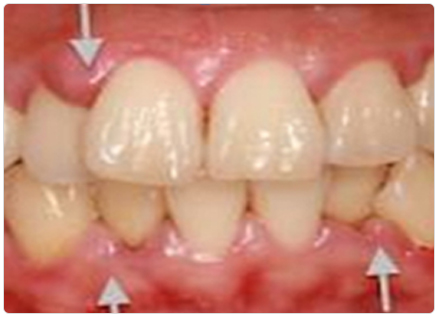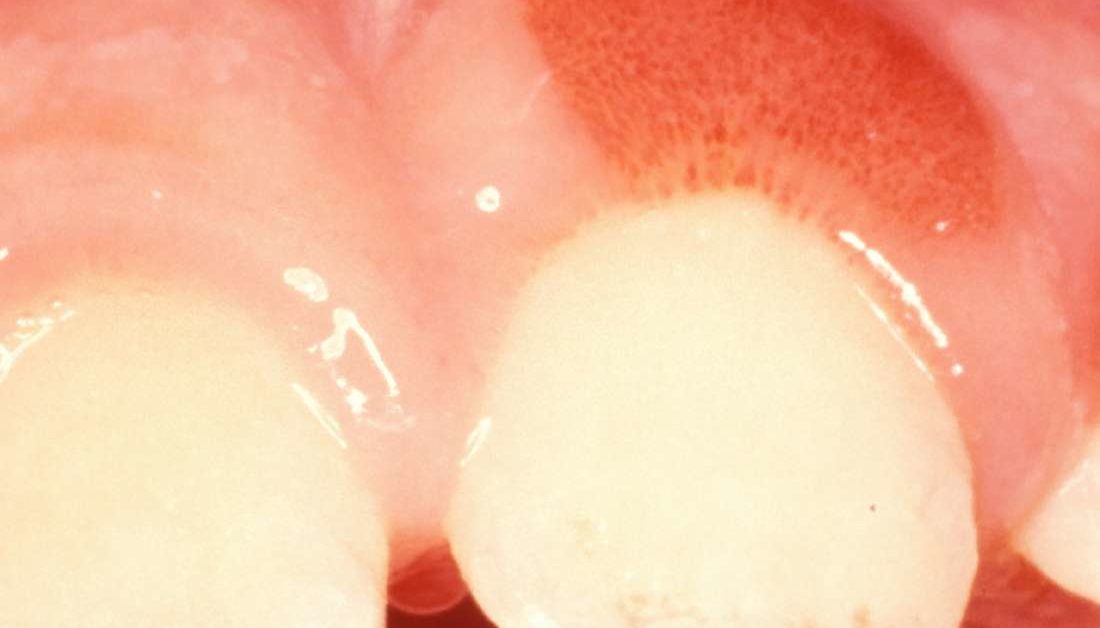

Teeth translucent pain gums swollen free#
The diagnosis was mucoepidermoid carcinoma of the right palate, and treatment involved surgical excision (maxillectomy) and free flap reconstruction.įigure 6. Right palatal swelling at the junction of the hard and soft palate. The maxillofacial surgeon will often undertake imaging with computed tomography (CT) and/or magnetic resonance imaging prior to biopsy of a suspected minor salivary gland or maxillary sinus tumour to determine the presence and extent of underlying bone erosion sinus, orbit or retromaxillary extension and any radiological evidence of regional lymphadenopathy (Figure 6).įigure 5. As a result of these diagnostic possibilities, referral for further assessment is recommended for any patient with a palatal swelling. The most common palatal ‘swelling’ is a palatal torus (discussed in the following section), but other causes of a palatal swelling are a palatal abscess or cyst (related to a non-vital upper first or second molar), minor salivary gland tumour (Figure 5), maxillary sinus tumour or lymphoma.

Mucoceles, fibroepithelial polyps and pyogenic granulomas are rare in the hard palate because the firm, keratinised palatal mucosa is relatively resistant to trauma. In this article, the causes of a palatal swelling have been separated from other areas in the oral cavity because of the slightly different diagnostic considerations. Pyogenic granuloma arising from the attached lingual gingiva of the lower right canine Fibroepithelial polyp on the right post-commissural region of the buccal mucosa with normal overlying mucosaįigure 4. Treatment includes surgical excision and removal of the traumatic irritant (eg subgingival plaque).įigure 3. When found in pregnant women, pyogenic granulomas are referred to as a ‘pregnancy epulis’. It is most commonly found on the attached gingiva, followed by the lateral aspect of the tongue, lower lip and buccal mucosa (Figure 4). Pyogenic granulomaĪ pyogenic granuloma appears as a raised red polypoid lesion that easily bleeds and is caused by an exaggerated connective tissue response to minor trauma. Fibroepithelial polyps can also be ulcerated. It is a consequence of exuberant healing after minor oral trauma, and it is most commonly found in the lower lip or buccal mucosa in response to occlusal trauma (Figure 3). A ranula – a mucocele of the sublingual glandĪ fibroepithelial polyp is, as its name suggests, a polypoid outgrowth of tissue from the mucosal surface, which consists of fibrous connective tissue covered by normal or hyperkeratotic epithelium. Mucocoele of the upper lip with dome-shaped swelling and bluish tinge of saliva visible underneath the normal-appearing mucosaįigure 2. Treatment involves removal of the sublingual gland as marsupialisation or incision and drainage alone leads to unacceptably high recurrence rates. The term ‘ranula’ is derived from its close appearance to a ‘frog’s belly’. Any mucocele should be excised and sent for pathological examination.Ī ranula is a mucocele of the sublingual gland (Figure 2). Alternatively, they can occur with obstruction of the salivary gland duct itself.ĭespite the frequency of mucoceles, if they do not spontaneously resolve within 2–3 weeks, it is recommended that patients be referred to an oral and maxillofacial surgeon for assessment, as mucoceles can occasionally be clinically difficult to distinguish from a minor salivary gland tumour. They occur when mucus/saliva escapes into surrounding tissues after trauma to the duct and is walled off by granulation or connective tissue. The submucosal swelling MucoceleĪ mucocele presents as a smooth, fluid-filled lump in areas with minor salivary glands that are commonly susceptible to oral trauma (eg lips, buccal mucosa Figure 1). The most commonly encountered swellings in the oral cavity are either submucosal in nature, or involve swelling of the underlying jaw (maxilla or mandible). The last of these presentations has been excluded from this article as it is assumed patients with teeth-related symptoms are more likely to present to their dentists than their general practitioners.

Broadly speaking, oral pathology can present as a mucosal surface lesion (discussed in an accompanying article by these authors), 1 swelling present at an oral subsite (lips/buccal mucosa, tongue, floor of mouth, palate and jaws) or symptoms related to teeth (pain, mobility).


 0 kommentar(er)
0 kommentar(er)
